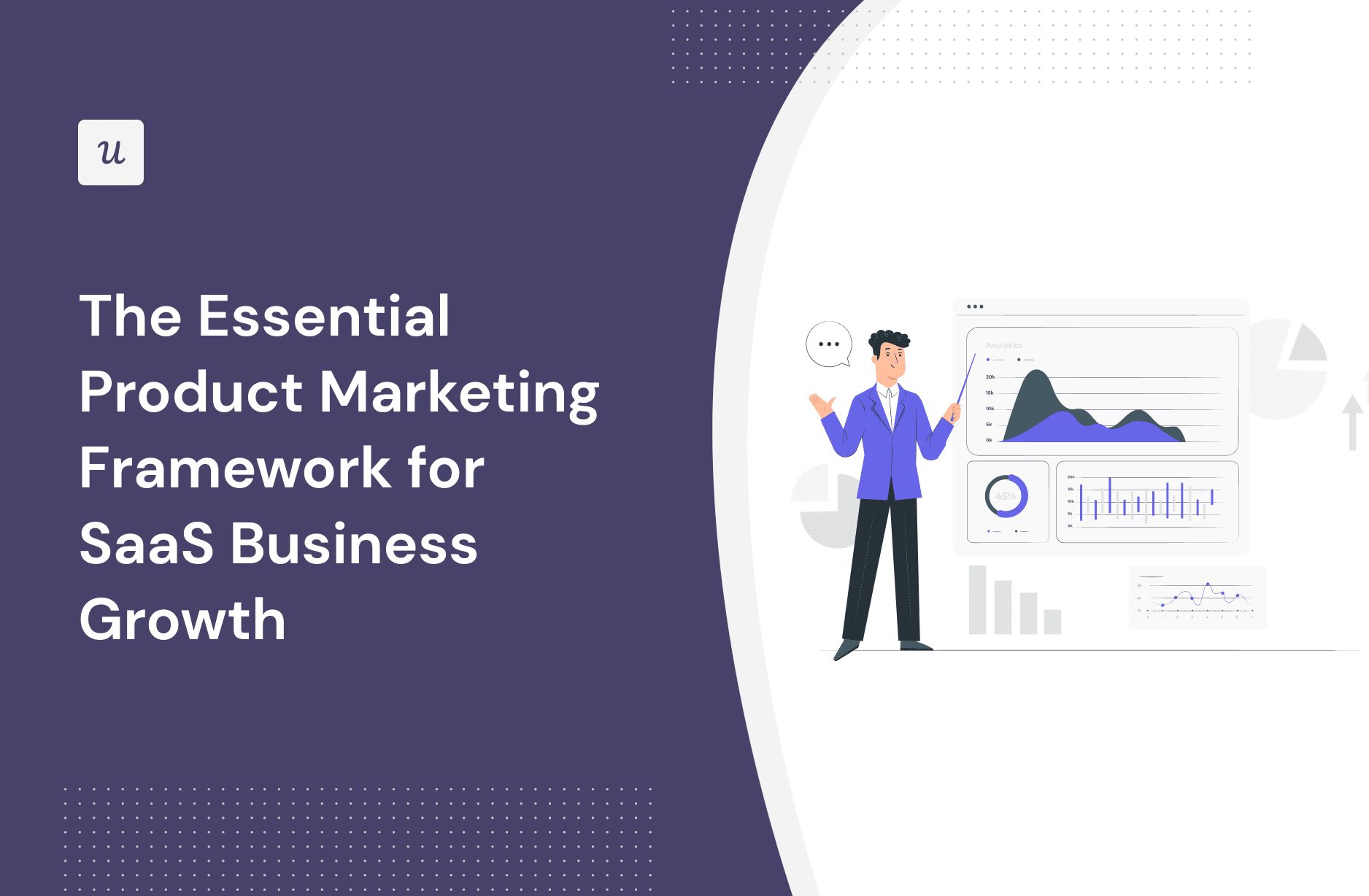
A product marketing framework is like a compass that guides you through the complex, fast-paced world of SaaS. From initial launch to ongoing product management, this framework acts as a map towards sustainable growth.
However, selecting a framework or creating one from scratch can be very confusing. In this article, we dive deep into what a product marketing framework is and explore its essential components.
Try Userpilot Now
See Why 1,000+ Teams Choose Userpilot

What is a product marketing framework?
A product marketing framework is a structured approach to successfully bringing a product to market. It covers everything you’ll need to successfully navigate a product marketing plan, from your target audience to your marketing strategy, messaging, etc.
Why is a well-structured product marketing framework important?
A well-structured product marketing framework provides a product marketing manager (PMM) with a system for introducing, promoting, and ensuring the success of their product in the market.
As a PMM, you’ll find that a framework helps direct your focus and resources. It keeps you and your team on the same page, with a clear vision and a good understanding of your audience and goals.
This, in turn, provides you with a roadmap, serving as a guide for the team. With this clarity comes improved effectiveness. Steps are clearly outlined, activities are tailored to specific needs and pain points, and all resources and efforts are well-optimized.
A well-designed framework also enhances your ability to scale and adapt as your product and market evolve. It provides a flexible foundation for growth, creating a feedback loop that encourages continuous improvement.
How to choose the right marketing framework for your product marketing efforts
Every part of product management can be enthralling yet complicated, and product marketing is no different. Selecting the right framework involves four key steps:
- Do your research: Examine the available frameworks and learn how they work. You also need to know who your target customers are and how best to reach them.
- Define your marketing objectives: What do you want to achieve with your product marketing efforts? Whether that is brand awareness, lead generation, or sales, your chosen framework should align with the objective.
- Evaluate your resources: What is your organization capable of? How much money, time, and manpower can you dedicate to your product marketing efforts? Some frameworks are more complex than others, so you need to keep that in mind.
- Choose a framework: Finally, you need to choose a framework that complements your strengths and addresses your weaknesses.
With the right frameworks, you can launch successful marketing campaigns that turn your new product into a market leader.
The 3 essential stages of any product marketing framework
Whether you’re creating a product marketing framework from scratch or adapting an existing framework, your selected framework should go through three essential stages.
In this section, we’ll go over each of these stages and how to complete them. This will cover everything from preparing for your initial product launch to all you need to drive product growth and sustainability.
1. Defining your go-to-market strategy
A go-to-market strategy is a comprehensive guide that details how you’ll send your product or service to the market. Otherwise known as your product launch strategy, it involves 5 primary steps:
Identifying your target market
The first step to creating an effective go-to-market strategy is performing market research and identifying your target audience and potential customers.
As a strategy designed to get your product into customer’s hands, this is a critical step. Your goal here is to identify the primary beneficiaries of your product so that you can create a suitable marketing strategy for them.
To achieve that goal, you’ll need to create a detailed user persona(s) of your potential customer. Your persona should highlight the customer’s demographics, pain points, goals, and buying behaviors.
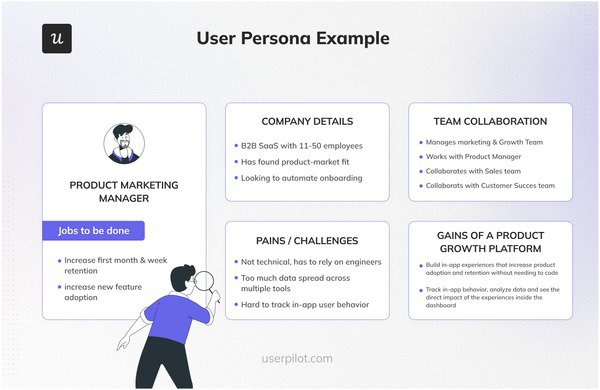
Crafting your value proposition
Next, it’s time to craft your value proposition. To do that, you’ll need to develop a value matrix that highlights user problems and positions your product as the best solution.
Your goal is to structure your product’s positioning and messaging for success. So, you need to list out your different buyer personas, highlight their pain points, and highlight how your product solves those problems.
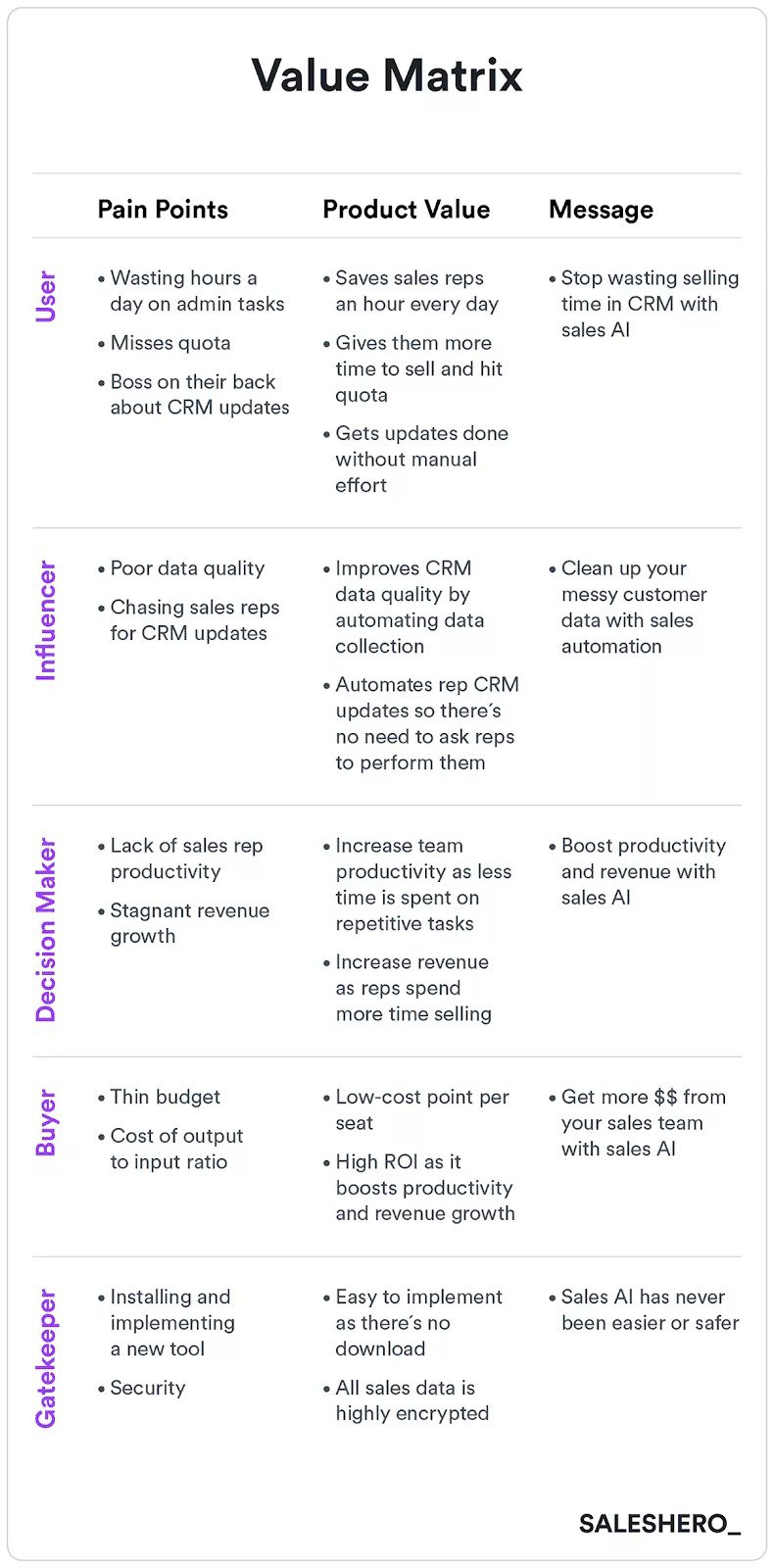
Mastering your product positioning and messaging
With your product’s value proposition settled, you can now proceed with your positioning and messaging.
Craft out simple but compelling messages that clearly communicate your product’s value. The messaging should be easily modifiable for your landing pages and other marketing channels.
When crafting your message, you must also note that the message will define how your brand is perceived. It should, thus, be designed to communicate carefully chosen brand values.
Deciding on your marketing channels
How will you communicate your value to your audience and bring awareness to your brand? Your answer will depend strongly on your target audience and the channel that’s most effective for them.
You’ll also have to consider your goals and budget. Ultimately, though, you’ll have six (6) major options, which can be mixed and matched as you please:
- Search engine optimization: The process of optimizing your website and content to rank highly in search engine result pages (SERPs).
- Email marketing: Crafting and sending personalized emails to a list of subscribers via email.
- Social media marketing: A product marketing strategy that involves engaging with your target audience through social media posts on platforms like Twitter, Instagram, etc.
- Content marketing campaigns: Creating and sharing valuable content to build brand authority and engage your audience.
- Pay-per-click advertising: Bidding on keywords to display your ads at the top of SERPs and other websites.
- Influencer marketing strategy: Partnering with influencers to promote your product or brand to their audience.
Creating marketing strategies
At this point, you now have all you need to create a go-to-market strategy that successfully connects with your target audience and drives brand awareness.
This is where you decide your primary line of attack to achieve significant market penetration. Will you depend on viral sharing, word-of-mouth marketing, authoritative content marketing, or something else?
2. Building a successful product marketing strategy
Next up is the product marketing strategy. This is a well-structured plan for driving product growth with both potential and existing customers. To be successful, your strategy should follow a five-step process:
Aligning marketing and sales teams
The first key to creating your product’s marketing strategy is effective collaboration. Ensure your sales and marketing teams work cohesively towards the same objectives, from lead generation to customer satisfaction.
Establish clear communication channels for both teams to share insights, campaign results, and feedback. Both teams should also work together to create the product marketing strategy, ensuring it aligns with both sales and marketing efforts.
As they collaborate more effectively, these teams will better streamline their efforts and drive your product’s success in the market.
Creating a value-based pricing strategy
Creating a competitive pricing plan involves plenty of research and planning. A good pricing model considers your product’s unique benefits as well as the prevailing market conditions.
So, your first move will be to understand your product’s value. How valuable is the task your product performs in terms of cost savings, time efficiency, etc.? Can you offer tiered pricing based on features, usage level, etc.?
You must also research the competitive landscape to identify your product’s advantages and maintain full transparency around your chosen plan.

Leveraging customer feedback
Actively listening to customers is a key part of the job of product marketers. You can solicit their feedback through customer surveys, interviews, user testing, and customer support channels.
Analyze any collected feedback to identify pain points and areas for improvement. Your goal here is to find common complaints or impactful concerns and work on them.
As you act on customer feedback, be sure to communicate your actions to them. Aim to inspire confidence by showing them how important their feedback is to you and the efforts you’re making to improve the product.
Mapping out the customer journey
How do your customers progress through your product from awareness to consideration, decision, etc.? What touchpoints do they interact with (e.g. website, social media, emails, ads, etc.)?
Customer journey mapping is key to your understanding of the customer’s needs and preferences at each stage of the journey. It will also help you identify key touchpoints in the journey.
As you better understand your users, you’ll create better experiences for them. You’ll also be equipped to optimize your marketing efforts to match their needs at each touchpoint.
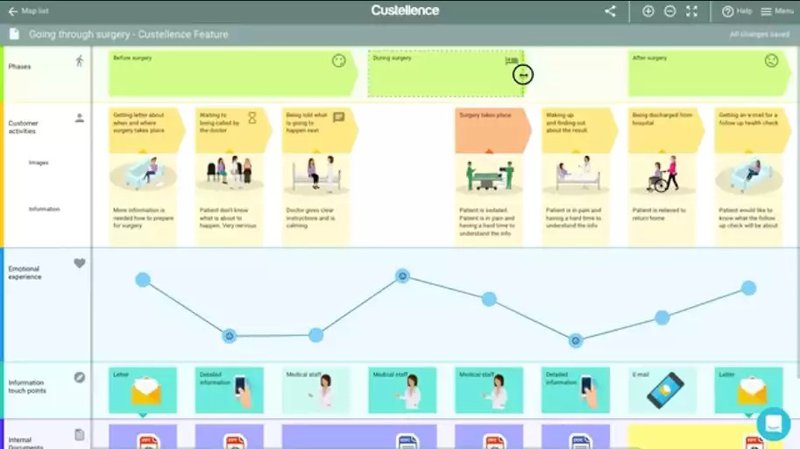
Creating an omnichannel customer experience
The touchpoints you identify while mapping the customer journey will be crucial for this next step. Your goal in this step is to create a consistent and seamless experience for customers across all channels (web, social media, etc.).
This means your messaging across channels must be similar but tailored to the channel’s unique characteristics. All channels must also be integrated to enable you to leverage different channels at different journey stages.
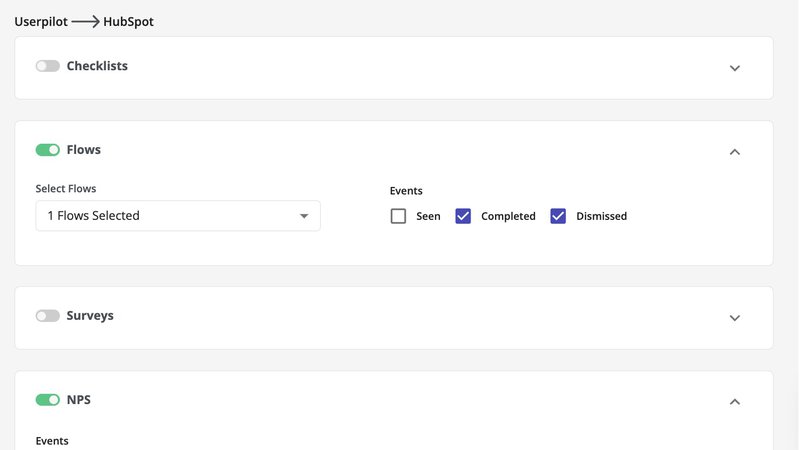
For example, you may use eye-catching social media teasers to pique interest, live chat support to answer questions, and personalized emails to keep users engaged.
3. Crafting growth strategies
The final part of your chosen product marketing framework should focus on helping you create long-term growth strategies. The goal at this stage is to ensure you keep acquiring new customers while maintaining the existing ones.
There are six key elements for success at this stage:
Equipping your marketing team with the essential tools
You must equip your team with the right tools if you’re to create successful product marketing campaigns and experiences. These tools can be grouped as follows:
- Product onboarding and automation tools: Create interactive onboarding experiences and automate in-app messages and experiences with tools like Userpilot, Appcues, and Pendo.
- Analytics tools: Collect and analyze data from different sources to better understand customer behavior. Examples include Google Analytics, HubSpot, and Userpilot.
- Feedback collection tools: Utilize tools like SurveyMonkey, HotJar, and Userpilot to create surveys and analyze user responses.
- Marketing automation tools: Tools for automating repetitive tasks like social media scheduling, lead nurturing, and email marketing. Examples include Mailchimp, Hootsuite, and Marketo.
- Product management tools: Keep your team organized and supercharge team collaboration with tools like Asana, Notion, and Slack.
Automating repetitive tasks
Automation is necessary if you are to successfully scale your product, as it helps streamline your workflow.
To proceed, analyze your workflow and identify mundane and repetitive tasks that can be automated, such as email follow-ups, report generation, social media posting, and more.
Then, choose the right tools to help you automate those tasks or explore built-in automation features in your existing tools. Finally, automate your tasks and regularly review your automated actions to optimize results.
Focusing on extending the customer lifetime value of existing customers
Expanding the customer lifetime value is a crucial strategy for sustainable business growth and profitability. It boosts brand loyalty, improves customer relationships, and makes your product more scalable.
One way to achieve this goal is by developing customer loyalty programs with reward points, discounts, etc. You can also offer targeted recommendations to improve upselling and cross-selling and deliver more value.
Ultimately, your goal is to ensure your customer’s needs are met and keep them from seeking alternatives. As they become more loyal to your brand, they’ll also become vocal advocates of your products.
Constantly measuring and improving customer satisfaction
You can not enjoy sustainable product growth without satisfied customers. To ensure your customers are always happy, you need to collect customer feedback at different in-app touchpoints.
You can utilize a variety of surveys for this endeavor, including CSAT, NPS, and CES surveys. These should tell you how easy-to-use the customer finds your product, how likely they are to recommend it, and how happy they are.
Analyze the feedback you collect to identify common themes and customer pain points. Then, take action to address any issues and improve customer satisfaction.

Measuring success with KPIs and metrics
Key Performance Indices (KPIs) and similar metrics allow you to track your product’s performance, evaluate the effectiveness of your marketing efforts, and make data-driven decisions.
Some KPIs and metrics you can track include:
- Customer retention rate: The percentage of customers that stick with your brand over a period.
- CLV: The average revenue a customer brings into your business through their lifetime as customers.
- Customer churn rate: The percentage of customers abandoning your product over a period.
- Customer activation rate: The percentage of customers who complete certain key actions and reach the activation point after signing up.
- Product stickiness: The degree to which customers regularly return to your product.
Analyzing customer behavior data
The only way to truly drive growth is to watch your customers for signals. Collect data on how customers use and interact with your product. Collect data across web, email, and CRM channels to see how they interact with your brand across channels.
Conduct in-depth analysis to uncover patterns and trends in the data. Look out for drop-off points, seasonal trends, and any valuable insights that can inform your marketing strategies and product development.
Finally, work with that data to improve your product and personalize your marketing efforts. With this, you’ll finally have created an iterative and sustainable product marketing framework.
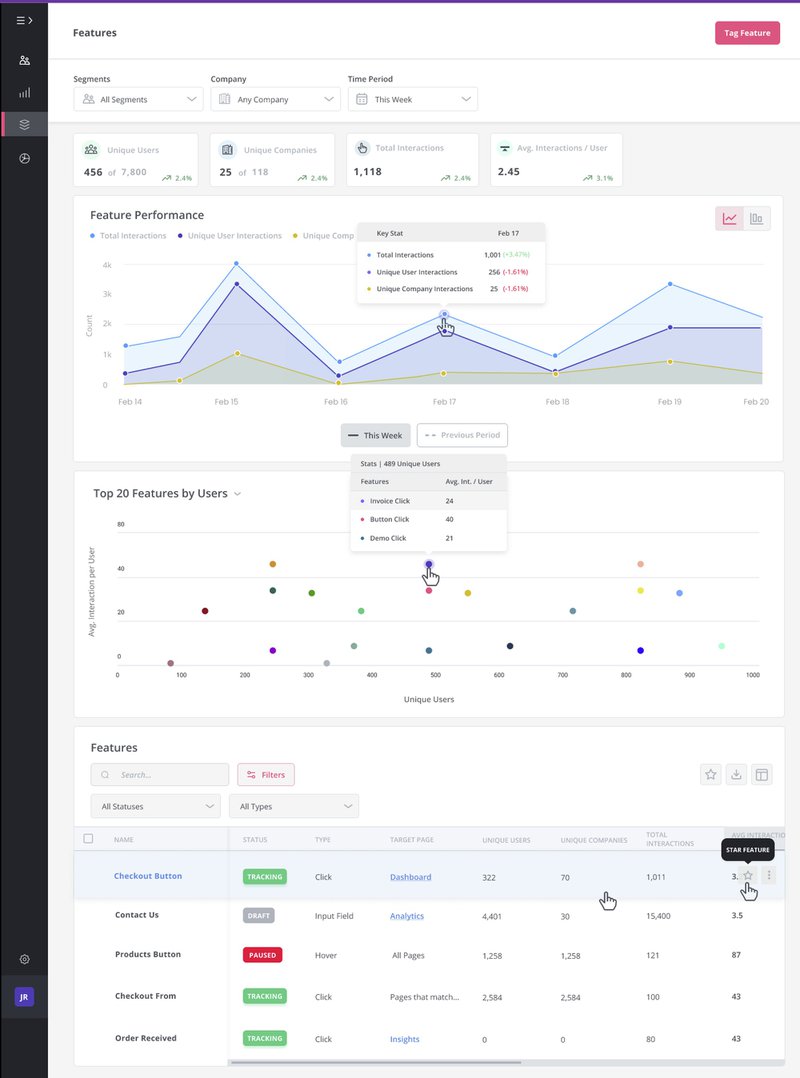
Conclusion
Remember, your product marketing framework is a living document, not a static one. As your business operations and market evolve, your framework should, too. So, be data-driven, customer-centric, and flexible.
Done creating your framework? Userpilot helps you collect feedback, create personalized in-app experiences, and analyze product data. Book a demo now to learn more!







